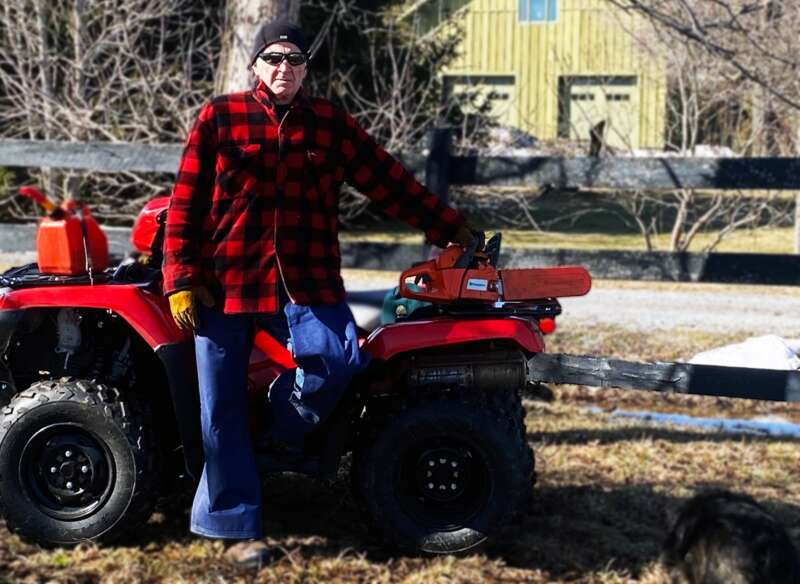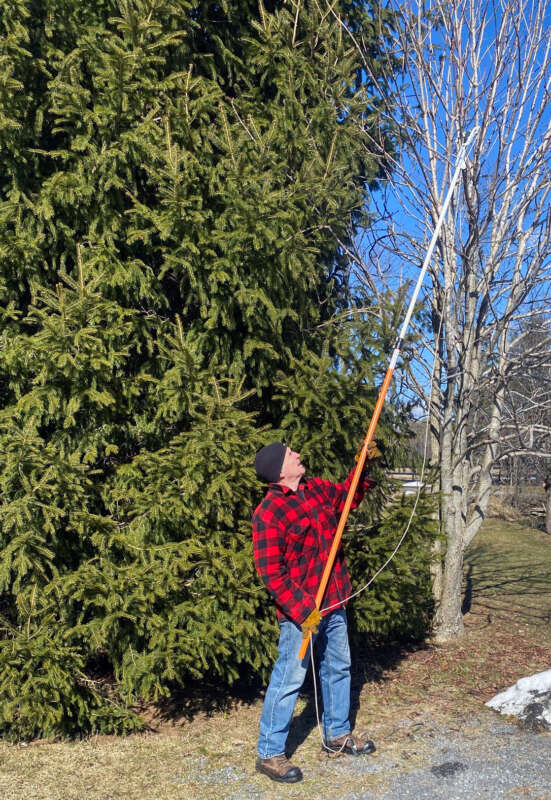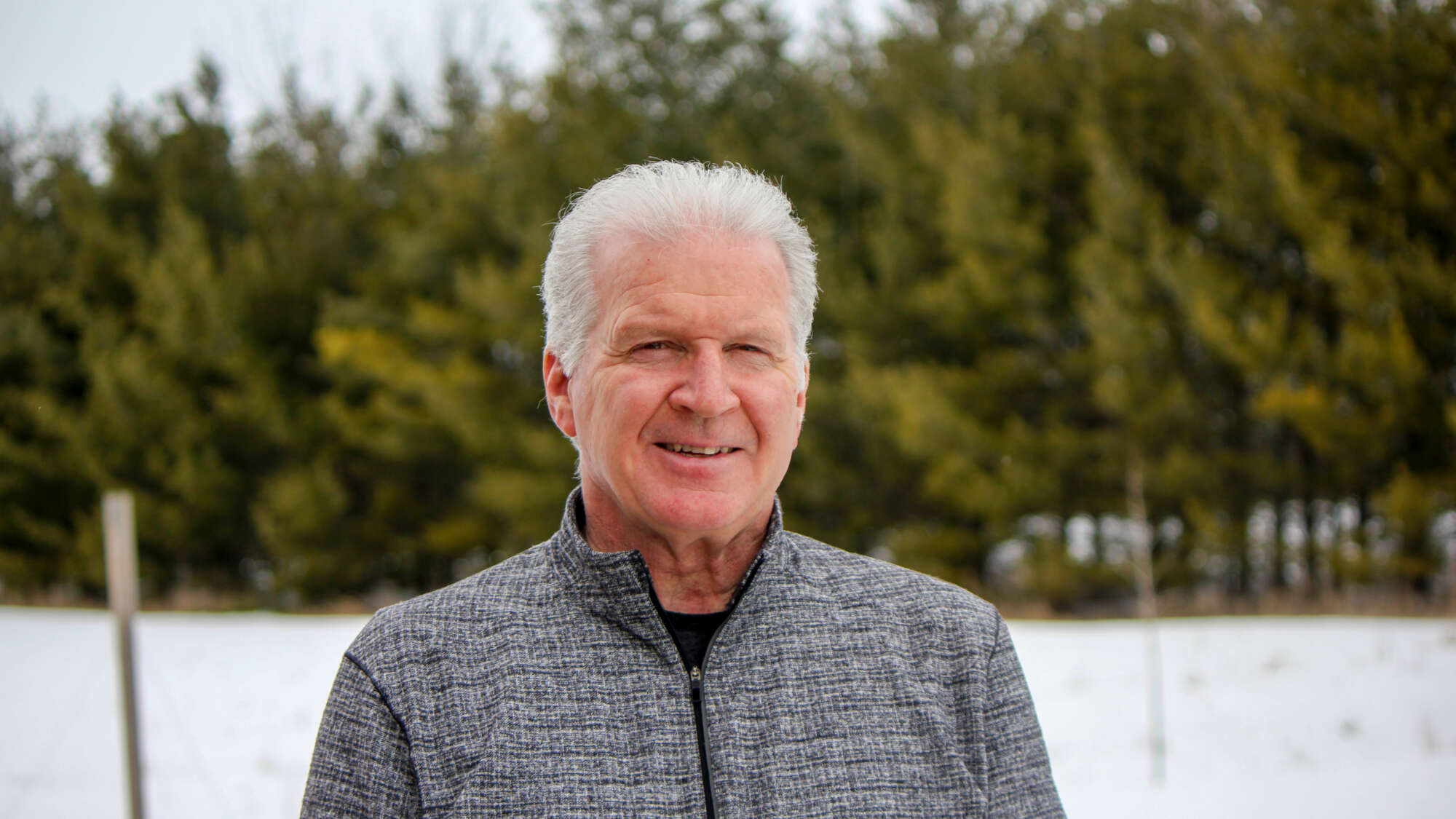Stephen Nicholson’s career in forest health and protection spans almost five decades, during which he has dedicated himself to developing and improving methods for applying pesticides and training others in their use.
Nicholson began his career with Natural Resources Canada in the mid-70s, investigating new forest insect control products and techniques, and went on to become a provincial forestry pesticide application specialist with the Ontario government. In 1987, he founded his own consulting firms and became a partner in a large aerial application firm that worked to control forest and agronomic pests on several continents.
Nicholson has worked with several international biopesticide manufacturers, most notably with Valent BioSciences, to develop and promote the use of effective and environmentally friendly pesticides. Throughout his career, he has lectured at various universities and colleges in Canada and participated in countless forest health seminars and professional trade organizations.

Image courtesy of S. Nicholson
Today, we have the privilege of discussing his expertise and accomplishments in forest health and protection.
The Interview:
Q: Stephen, can you tell us a little bit about your background and how you got started in the forest health industry?
Nicholson: “Growing up on a dairy farm near Ottawa, Canada instilled in me a strong work ethic. While at university, I worked with Environment Canada-Canadian Forestry Service testing new insecticides for forest insect control during the summers and breaks. It was a challenging job that required working long hours, seven days a week, and frequent travel. But I loved it. I got to travel to different places, stay in hotels, work with great people, and learn about airplanes. And the bonus was getting paid $5.00/hour, which was much higher than the usual student wages of $3.50-$4.00/hr.
I continued working with the federal research group during Christmas and spring breaks until I graduated. Soon after, I was offered a full-time position at the research institute. I felt lucky to be doing something I enjoyed and was passionate about, while also being able to use my skills and knowledge to make a positive impact in the forest health industry.”
Q: What is your perspective on the impact of climate change on forest health, and how do you see this issue evolving in the future?
Nicholson: “Climate change is not a new phenomenon, as we have experienced a “mini ice age” for about 400 years in the last millennium. During that time, the natural world adapted, and I believe it will do so again. However, the current situation is different, as we have a much larger human population and more human developments located in coastal areas, which could be catastrophically affected by rising sea levels due to glacial melt.
Furthermore, rising temperatures will lead to longer periods of drought in some regions, rendering those places uninhabitable and unusable for food production. This could increase migration and pressure on land use, housing, and social services in more developed nations.
Increased global trade and travel have allowed insects and diseases to proliferate and spread globally, which poses a significant threat to forests. As temperatures increase in northern areas, forest insects and diseases usually associated with tropical or warmer forest ecosystems will migrate further north, causing further damage to forests. Planting more trees has been proposed as a solution to reduce the rate of climate change. However, achieving this goal is challenging due to lack of seed, planters, collectors, and funding. Moreover, it will take 15-20 years before any measurable impacts on climate change will be seen, which is often not considered by politicians.
To ensure the success of reforestation efforts, we must consider several factors. We need to determine which lands to plant, which species to plant, and how to ensure their survival, especially if the north is warming at an unprecedented rate. Should we plant more southern species farther north, such as radiata pine (Monterey pine)? Should we replant forest fire burns with the same species or with more climate-resilient species? Will extending silvicultural monocultures farther north exacerbate the influx of insects and diseases? Additionally, if agriculture moves farther north due to rising temperatures, existing forest land may be removed to make way for agricultural crops, creating a land use conflict. It is essential to consider who will pay to protect these new climate change forests from insects, diseases, and fire.
The largest forest owner in the US is the USDA Forest Service, and very little of the national forest and range lands are managed sustainably. Therefore, immediate action is required to manage these lands sustainably to achieve the goal of planting more trees. It could be said that political action or inaction is a more significant threat to the forest than climate change itself. For example, a sustainable boreal forest plantation will be harvested over an 80-year cycle, and if political inaction results in unsustainable harvesting practices, it could lead to irreversible damage to the forest ecosystem.”
Q: What are some of the most promising developments in forestry research and innovation that you’ve seen in recent years?

Image courtesy of S. Nicholson
Nicholson: “There have been several promising developments in forestry research and innovation in recent years. Firstly, the use of satellite and drone imagery for forest health monitoring has rapidly increased, providing more accurate data. Secondly, digitization and GIS technology has allowed forest managers to gather vast amounts of silvicultural data, improving forest management decisions. Thirdly, more environmentally friendly approaches to controlling forest insects and diseases have been developed. Additionally, the development of building technologies allowing wooden structures to reach over 300 ft in height is a promising innovation. Finally, there has been a growing societal awareness of the importance of trees, which is leading to increased interest and funding for silvicultural research and innovation.”
Q: Can you talk about any notable collaborations or partnerships you’ve been involved in during your career in forestry?
Nicholson: “Forest health ‘people’ have always relied upon formal and informal networks and organizations to increase our collective awareness of forest health. There are numerous regional and national forest health associations meeting on a regular basis to share knowledge and expertise, issues and concerns. The International Union of Forest Research Organization (IUFRO) shares knowledge amongst policy makers, stakeholders, and scientists. There is an annual meeting for IUFRO at large, and regular meetings amongst IUFRO’s 75 or so committees and focus groups.
I’ve been involved in several notable collaborations and partnerships during my career in forestry. SERG-I is a group of scientists, forest managers and researchers that share resources and funds to address current and future forest health issues in North America. I’ve also been involved in CANUSA, a collaborative effort with the US and Canada, and several provinces and states in the eastern part of the continent dedicated to developing advanced control strategies for the eastern spruce budworm. Another organization I’ve worked with is NLDMNB, a US-based organization that shares information and resources focused upon the most notorious invasive forest insect species, Lymantria dispar dispar, now commonly known as the Spongy Moth. These collaborations and partnerships have been critical in advancing our understanding of forest health issues and developing effective strategies for managing them.”
Q: What motivated you to stay in forestry/forest health for all those years?
Nicholson: “I’ve stayed in forestry/forest health for all these years because it’s an exciting field with numerous technical and management issues requiring investigation and resolution. People in this discipline tend to be lifers and are all motivated by their love of the forest and the outdoors in general. Whether a forester is responsible for an urban park or a large tract of forest land, they all understand the importance of a forest, a woodlot, even a single shade tree in someone’s backyard.
I started in forest health a few years after the publication of Rachel Carson’s book Silent Spring over 60 years ago. That book changed forest practices and many agricultural practices too. It caught the attention of politicians and the public at large, giving birth to the environmental movement that we are still a part of today.”
Q: What would be your number one reason as to why someone should consider going into forestry?
Nicholson: “Forestry used to be primarily focused on extraction and commercial purposes, but now it’s about much more. A forester must be knowledgeable about all aspects of a forest ecosystem, from wildlife to fire prevention to sustainability. Forest health is a key component of forestry, and it’s an exciting field to be a part of. There are numerous opportunities to work with people who love the environment and have a passion for the outdoors. Additionally, new technology is revolutionizing the industry, from sustainable management to protect forests from insects, diseases, and fire, to producing products for housing and industrial purposes. There is always something new to learn and do in forestry, making it one of the most dynamic and exciting fields around.”
Q: When you aren’t busy protecting the forests, what do you like to do?
Nicholson: “My wife and I own a small horse farm and I spend a great deal of time on the farm, in the shop, or in the woodlot. I have a collection of classic cars and vintage tractors that all need attention. There are fields that need tilling, and fences that always need fixing. My wife and I both work from home too and she has been very supportive (and tolerant!) of the demands of my career. Coming from a large family and now a couple of teenage grandchildren thrown into the mix makes for a very busy and satisfying life.”
Disclaimer: The views and opinions expressed in this interview are those of the interviewees and do not necessarily reflect the views or positions of Public Health Landscape or Valent BioSciences, LLC.
